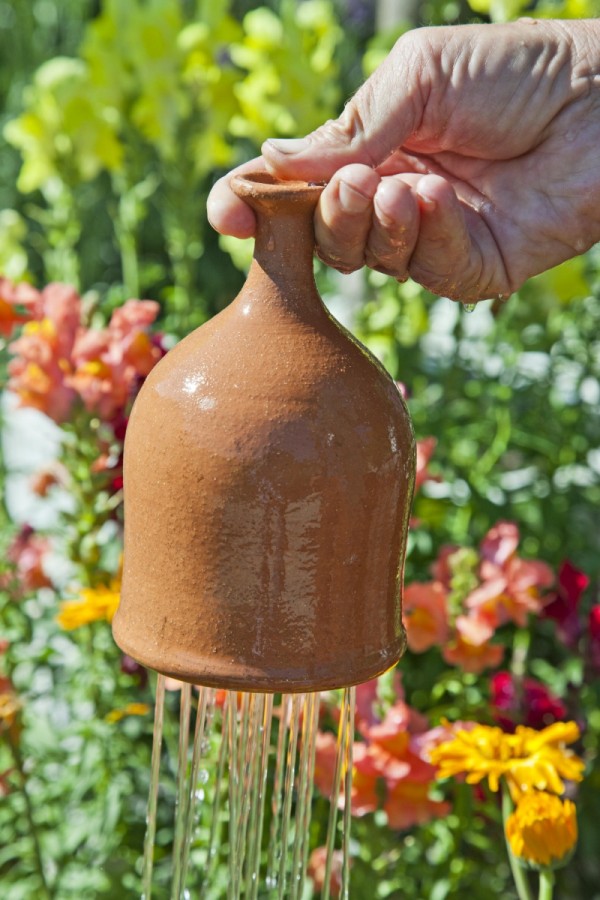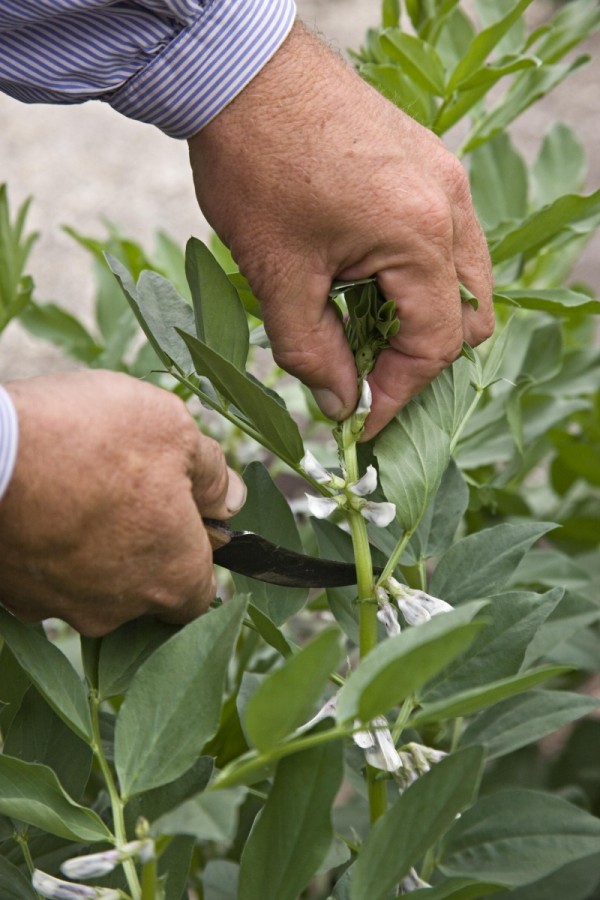When Wesley Greene picked the location for the Colonial Garden and Colonial Garden Shop in the Historic Area in the early 1990s, there was not much open land on Duke of Gloucester Street.
But there was space across the street from Bruton Parish Church and he thought that was ideal.
[brightcove videoID=3747456293001 playerID=3703125019001 height=315 width=560]
As Colonial Williamsburg’s gardener, Greene wanted the gardens to serve as an open, welcoming spot for guests — a place to get a sampling of what the historic trades are all about. And the spot across from the church was often a place where Revolutionary City guests begin their tour of the Historic Area.
The garden was designed and built – and now is maintained — using period tools and techniques. There is a small garden shop offering heirloom plants, seeds, bulbs and garden items.
Gardening remains popular and relevant today, and Greene said he and other Colonial Garden workers answer all kinds of questions about plants and gardening.
“People see plants all over town and they want to know what they are,” he said.
There are a lot of questions about plant care in general – and about plants growing in the Colonial Garden in particular, he said. “Gardening is something that connects with a wide swath of the population.”
Greene also fields inquiries on his Colonial Williamsburg gardening blog – The Ancient Gardener’s Instructor and Weekly Calendar.
The garden is popular with guests of all ages, and Greene has taken special care to make the design kid-friendly and interactive for little ones. In the garden, children can do everything from planting seeds, to hauling water from the well and even picking caterpillars off the cabbages. They can learn to build wattle fences and help harvest fruits and vegetables.
Helping in the garden is a memory many visitors share. “When I was 10-years-old I helped you haul water,” a college student recently told Greene.
Creating those memories is part of his job as an interpreter. “I talk a lot and garden a little, and get the job done in the context of entertaining and enlightening the visitors,” Greene said.
Many of the garden’s plants are grown from heirloom seeds, painstaking located through both research and collaboration with gardeners all over the world. The plants were – and are — carefully selected based on descriptions or sketches from historic documents and gardening journals. And there’s a little conjecture, too, Greene said.
Since the seeds are saved from year to year, the garden helps preserve 18th-century plant varieties and additional varieties are consistently added. “We’re always looking for heirloom varieties of plants,” such as the London Flag Leek, which was grown from seeds obtained from the Vavilov Institute in St. Petersburg,.Russia, Greene added.
Some plants are specifically grown in certain years just to keep up Colonial Williamsburg’s store of seeds, he explained.
“I’d like to think we have the best collection of 18th-century vegetables of any place in the country,” said Greene, who is happy to share seeds and information on colonial-era gardening.
“It spreads the risk out if 20 people are growing a plant” instead of it just being grown in one place. he said.
And recently, Greene has been able to spread out his own work. The garden has an apprentice for the first time.
Jennifer Mrva came to Virginia from upstate New York last year to take part in the new five-year apprenticeship program. Her background in organic community-supported agriculture was a good fit, he said, because organic gardening today is about as close as you can get to 18th-century gardening.
In December Emily Nelson, a graduate of Brigham Young University Idaho, with a degree in Biology joined the garden as a second apprentice.
So what was gardening like in the 18th century?
Greene estimates that about half of the household in 18th-century Williamsburg kept gardens and most visitors are surprised to learn that no one grew a garden to feed the family. Vegetable gardens in the 18th century, like home vegetable gardens in the 21st century, provided luxuries, not staples. Staples, which were primarily meats and grains, were purchased at market.
The limiting feature to gardening throughout history has been man’s ability to move water. In 18th-century Williamsburg water was drawn from a well by hand and put out with watering cans. On dry years at the Colonial Garden, this amounts to 4,000 pounds of labor per day, well beyond what the lady of the house could accomplish by herself.
Many families would have had a winter garden, which didn’t require as much water or labor. Such a garden would have included vegetables that are not so different from plants grown in a winter garden today — kale, collards, turnips, spinach, cabbages and cresses.
Greene’s Favorite Plants
Greene says picking a favorite plant is like asking him to choose a favorite child. “My favorite plants are the ones that are in season,” he said.
Greene came to Colonial Williamsburg in 1981. Hired as a garden foreman at the Governor’s Palace, he spent the next 15 years in the landscape department. He founded the Colonial Garden and Garden Shop in 1996, and also continued to work in the landscape department until 2011.
When the garden was first designed, the focus was on an authentic design, but it took a while to get the plants right, Greene said. Today it is a proper representation of both the right kind of plants and design, built using tools and techniques that would have been used in an 18th-century garden, he said.
Design can be open to interpretation. Colonial gardens would have been as different from household to household as modern gardens are today.
To compile some of his extensive knowledge on colonial gardens and gardening, Greene wrote a book on historic gardening called, “Vegetable Gardening the Colonial Williamsburg Way: 18th-Century Methods for Today’s Organic Gardeners,” in 2012. Before he changed his major to botany, Greene concentrated his study in English and aspired to be a writer. The book, he said. was a way of “melding my two passions in life so it was a great joy.”
The 256-page book, illustrated with many color photos by Barbara Temple Lombardi, has chapters on beans and peas, greens, root crops, onions, cucumbers and melons, tomatoes and peppers, and other produce grown in colonial gardens, as well as chapters on techniques.
When Greene isn’t gardening in the Revolutionary City, he helps his wife run a plant nursery business in Gloucester County, Va.. “I’m pretty much common labor when I get home,” he laughed.
____________________
Funding for publication of Wesley Greene’s book,”Vegetable Gardening the Colonial Williamsburg Way: 18th-Century Methods for Today’s Organic Gardeners,” was provided by longtime Colonial Williamsburg supporters Teresa and Ken Wood of Chester Springs, Pa.

Leave a Reply